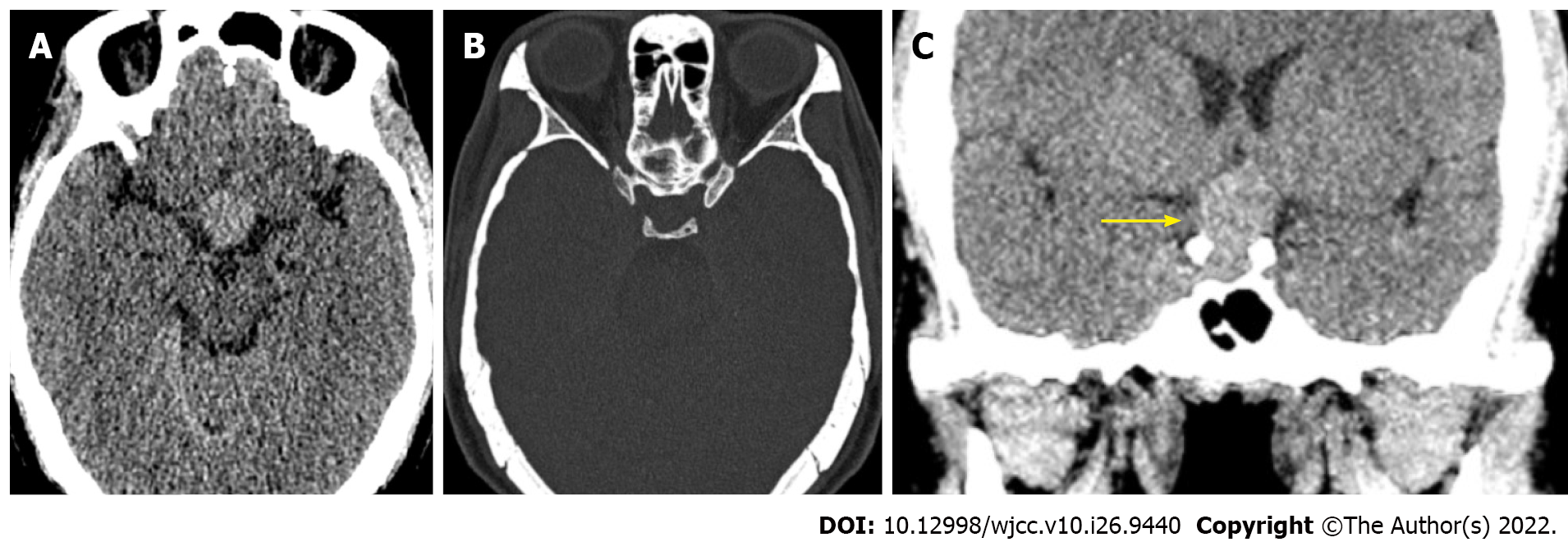Copyright
©The Author(s) 2022.
World J Clin Cases. Sep 16, 2022; 10(26): 9440-9446
Published online Sep 16, 2022. doi: 10.12998/wjcc.v10.i26.9440
Published online Sep 16, 2022. doi: 10.12998/wjcc.v10.i26.9440
Figure 1 Imaging findings of immunoglobin G4-related hypophysitis on computed tomography.
A: Axial unenhanced computed tomography (CT) scan; B: A well-defined, homogeneous, mild hyperdense mass measuring 2.5 cm × 2.3 cm × 1.8 cm in the sellar region, without bone destruction; C: Coronal CT showing the “hourglass sign” (arrow).
Figure 2 Imaging findings of immunoglobin G4-related hypophysitis on magnetic resonance imaging.
A and B: Coronal T2-weighted imaging (A) and sagittal T1-weighted imaging (B) showing an iso-hypointensity mass with an ”hourglass sign” in the sellar region; C and D: Sagittal (C) and coronal (D, arrow) contrast-enhanced T1-weighted imaging showing obvious homogeneous enhancement.
Figure 3 Histological features of immunoglobin G4-related hypophysitis.
A: Hematoxylin and eosin staining showed abundant plasma cell and lymphocyte infiltration with local fibrosis (× 400); B: Immunohistochemical analysis showed immunoglobin G4 (IgG4) (+)/IgG (+) > 40%, and IgG4 (+) cells > 10/high-powered field (IgG, × 400); C: Immunohistochemical staining for Ki-67 showing cellular proliferation (× 100).
- Citation: Lv K, Cao X, Geng DY, Zhang J. Imaging findings of immunoglobin G4-related hypophysitis: A case report. World J Clin Cases 2022; 10(26): 9440-9446
- URL: https://www.wjgnet.com/2307-8960/full/v10/i26/9440.htm
- DOI: https://dx.doi.org/10.12998/wjcc.v10.i26.9440











